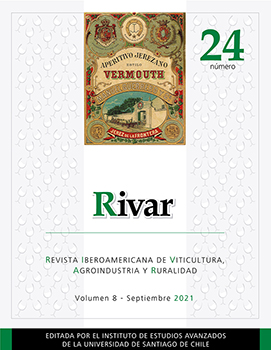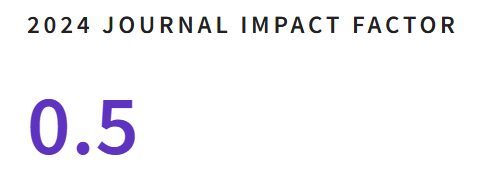Las Saturnales romanas y su carácter de festividad agrícola
DOI:
https://doi.org/10.35588/rivar.v8i24.5193Palabras clave:
Saturnales, festividad agrícola, civilización romana, historia antigua, estudios culturalesResumen
Estudiaremos el carácter de culto agrícola que en su origen tuvieron las fiestas Saturnales y cómo, con el paso del tiempo, este carácter quedó invisibilizado en una festividad popular de inversión de roles sociales que se tomó como emblema apologético de la libertad y como antecedente pagano del Carnaval. A partir de testimonios de escritoresclásicos latinos, puestos en diálogo con autores modernos como Callois, Eliade, Bajtín, entre otros, se analizan estas fiestas romanas. En ellas subsiste el eco de antiguos rituales propiciatorios y de purificación, y que integran un ciclo agrícola. Se concluye en que en las Saturnales resaltan dos rasgos característicos de la fiesta: la oposición entre elCosmos versus el Caos, con el triunfo simbólico del orden dominante, y la demarcación del tiempo en un calendario agrícola formado por estaciones de siembra y de cosecha, que de manera metafórica aluden al ciclo vital de nacimiento y muerte.
Descargas
Referencias
Batjín, M. (1998). La cultura popular en la Edad Media y en el Renacimiento. El contexto de François Rabelais. Madrid, Alianza.
Bellucci, ND. (2017). “Lusso ed eccentricità come parti comiche nei Saturnalia di Macrobio”. Rudiae. Ricerche sul mondo classico 2(25): 49-74.
Callois, R. (1996). El hombre y lo sagrado. Ciudad de México, Fondo de Cultura Económica.
Caro Baroja, J. (1979). El carnaval (análisis histórico-cultural). Madrid, Taurus.
Columela, LJM. (1988). De los trabajos del campo. Madrid, Ministerio de Agricultura, Pesca y Alimentación-Siglo Veintiuno de España.
Cudny, W. (2014). “The Phenomenon of Festivals: Their Origins, Evolution, and Classifications”. Anthropos 109(2): 640-656. DOI https://doi.org/10.5771/0257-9774-2014-2-640
Chevalier, J y Gheerbrant, A. (2007). Diccionario de los símbolos. Barcelona, Herder.
Detienne, M. (1986). Dioniso a cielo abierto. Barcelona, Gedisa
Donahue, JF. (2003). “Toward a Typology of Roman Public Feasting”. American Journal of Philology 124(3): 423-441. DOI https://doi.org/10.1353/ajp.2003.0043
Dumézil, G. (1986). Fêtes romaines d’été et d’automne. Suivi de Dix questions romaines. París, Gallimard. DOI https://doi.org/10.14375/np.9782070292530
Eliade, M. (2001). El mito del eterno retorno. Arquetipos y repetición. Buenos Aires, Emecé.
____. (1981). Lo sagrado y lo profano. Madrid, Guadarrama.
____. (1979). Historia de las creencias y de las ideas religiosas. 2 vols. Madrid, Cristiandad.
Frazer, JG. (1951). La rama dorada. Ciudad de México, Fondo de Cultura Económica.
Gadamer, HG. (1991). La actualidad de lo bello. Barcelona, Paidós.
Gaignebet, C. (1984). El carnaval. Ensayos de mitología popular. Barcelona, Alta Fulla.
Goldlust, B. (2007). “Religion et culture dans le dernier banquet païen des lettres latines, les Saturnales de Macrobe”. Bulletin de l’association Guillaume Budé 1(2): 147-173. DOI https://doi.org/10.3406/bude.2007.2267
____. (2005). “La littérature et la religion comme affirmations identitaires”. Revue des Deux Mondes: 127-136.
Lejavitzer, A. (2011). “Vino, vida, salud”. Estudios 97: 183-191.
____. (2000). Hacia una génesis del epigrama en Marcial: Xenia y Apophoreta. Ciudad de México, Universidad Nacional Autónoma de México.
Livio (1955). Ab urbe condita. Eds. RS. Conway y CF. Walters. En https://latin.packhum.org/loc/914/1/0#0 (consultado 08/08/2021).
Macrobio (1852). Saturnalia [S.]. Ed. L. von Jan, Quedlinburg-Leipzig, Gottfried Bass. En https://penelope.uchicago.edu/Thayer/E/Roman/Texts/Macrobius/Saturnalia/home.html (consultado 08/08/2021).
Marcial (1969-1973). Epigrammes. Ed. y trad. HJ. Izaac. París, Les Belles Lettres.
Miano, D. (2015). “The Goddess Ops in Archaic Rome”. Bulletin of the Institute of Classical Studies 58(1): 98-127. DOI https://doi.org/10.1111/j.2041-5370.2015.12005.x
Murray, O. (ed.). (1990). Sympotica. A Symposium on the Symposion. Oxford, Clarendon Press.
Ovidio (2018). Amores [A.]. Trad. J. Quiñones Melgoza. Ciudad de México, Universidad Nacional Autónoma de México.
____. (1978). Fastorum libri sex [F.]. Eds. EH. Alton, DEW. Wormell y E. Cortney. En https://latin.packhum.org/loc/959/7/0#0 (consultado 08/08/2021).
Pellam, G. (2014). “Ceres, the Plebs, and Libertas in the Roman Republic”. Historia 63(1): 74-95.
Pellizer, E. (1990). “Outlines of a Morphology of Sympotic Entertaiment”. En Murray, O. (ed.). Sympotica. A Symposium on the Symposion. Oxford, Clarendon Press: 177-184.
Plutarco (1985). “Rómulo” [Rom.]. En Plutarco. Vidas Paralelas. Madrid, Gredos.
Reynolds, A. (1987). “The Classical Continuum in Roman Humanism: The Festival of Pasquino, the Robigalia, and Satire”. Bibliothèque d'Humanisme et Renaissance 49(2): 289-307.
Rüpke, J. (2006). “Urban Religion and Imperial Expansion: Priesthoods in the Lex Ursonensis”. En De Blois, L.; Funke, P. y Hahn, J. (eds). The Impact of Imperial Rome on Religions, Ritual and Religious Life in the Roman Empire. Leiden y Boston, Brill: 11-23. DOI https://doi.org/10.1163/9789047411345_003
Schultz, U. (1994). La fiesta. Una historia cultural desde la Antigüedad hasta nuestros días. Madrid, Alianza.
Scullard, HH. (1981). Festivals and Ceremonies of the Roman Republic. Londres, Thames and Hudson.
Shelton, JA. (1998). As the Romans did. A Sourcebook in Roman Social History. Nueva York y Oxford, Oxford University Press.
Stek, T. (2009). Cult Places and Cultural Change in Republican Italy: A Contextual Approach to Religious Aspects of Rural Society after the Roman Conquest. Amsterdam, University Press.
____. (2008). “A Roman Cult in the Italian Countryside?”. Babesch 83: 111-132.
Varrón (1992). De las cosas del campo [R.R.]. Trad. D. Tirado Benedí. Ciudad de México, Universidad Nacional Autónoma de México.
____. (1938). On de Latin Language [L.L.]. Eds. TE. Page, E. Capps y WHD. Rose. Trad. RG. Kent. Londres, William Heinemann. En https://ia800302.us.archive.org/22/items/onlatinlanguage01varruoft/onlatinlanguage01varruoft.pdf (consultado 10/09/2021).
Virgilio (1972). Opera [Aeneis=A., Georgica=G.]. Ed. RAB. Mynors. En https://latin.packhum.org/author/690 (consultado 08/08/2021).









